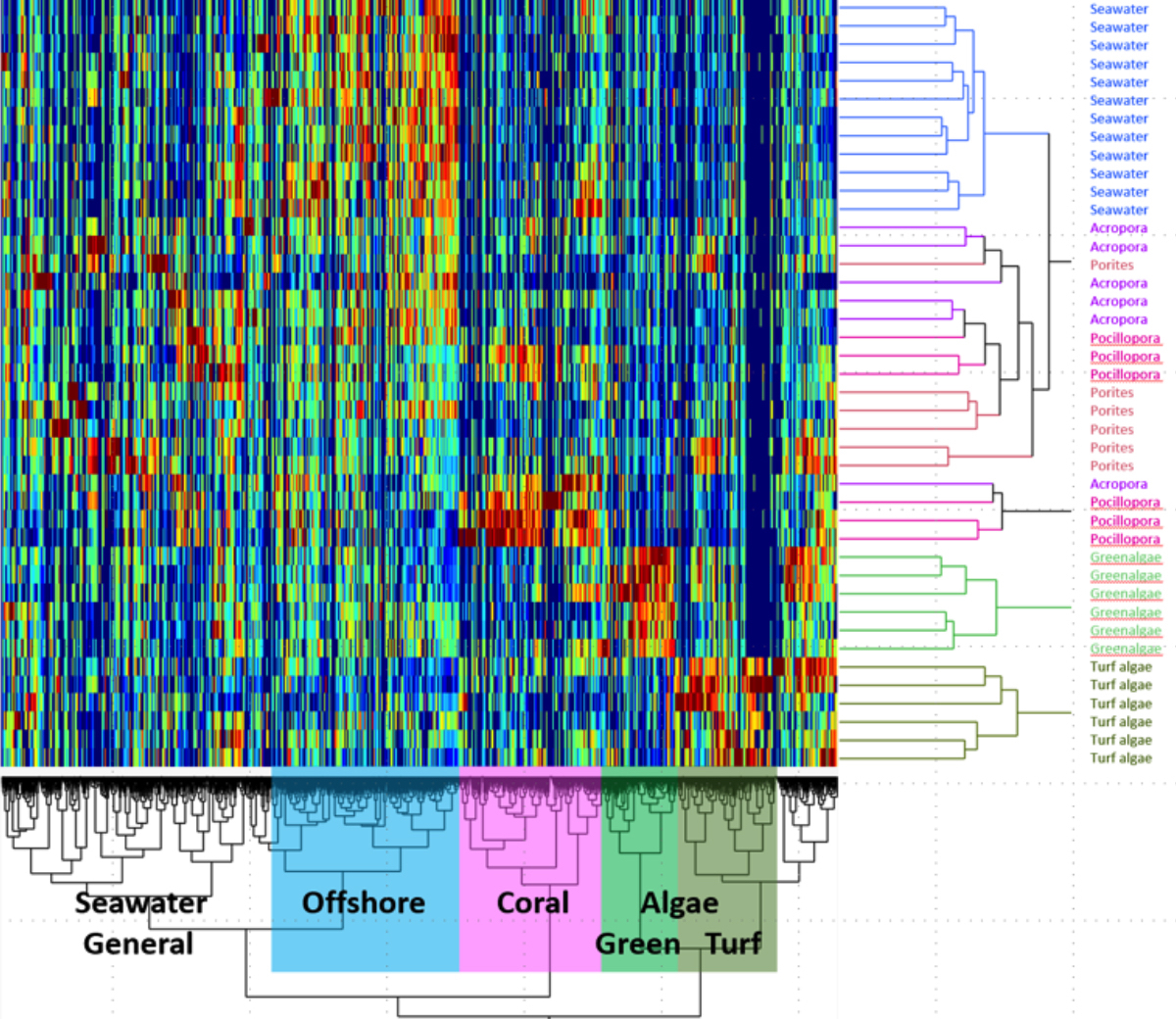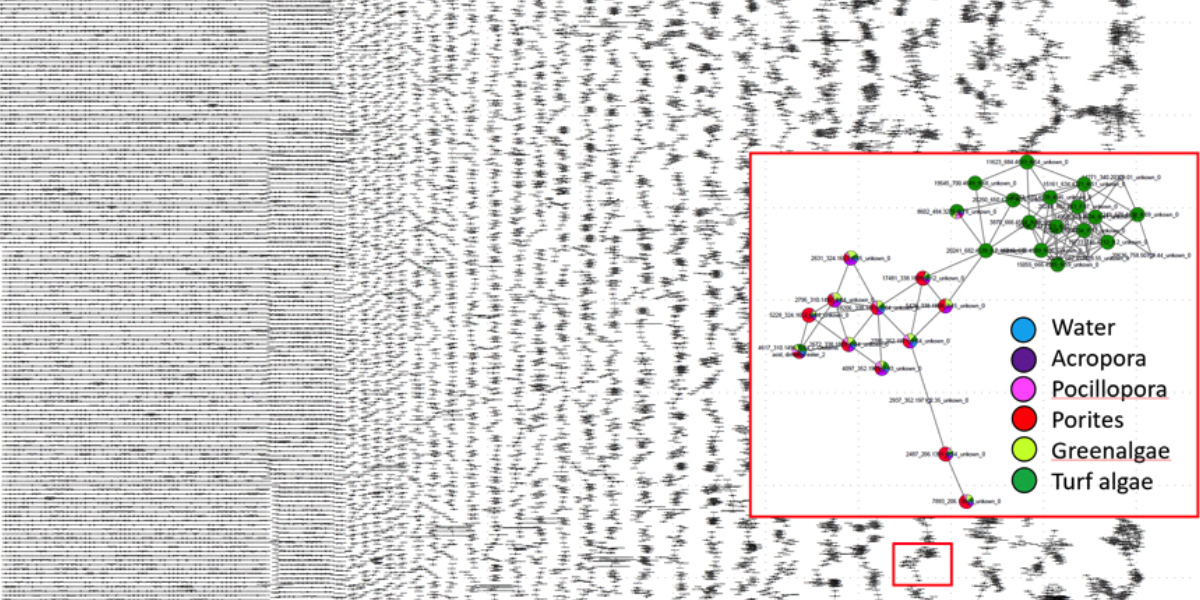The coral reef metabolome
Coral reefs exhibit some of the highest rates of primary production and metabolic turnover of any ecosystem. Yet they persist in some of the most oligotrophic waters on the planet. This is only possible through tight recycling of nutrients and energy primarily in form of dissolved organic matter (DOM).

Complexity of processes
Roughly one third of gross benthic production in reefs is released as dissolved organic matter. Despite the recognized importance of DOM for aquatic systems virtually nothing is known about its chemical composition. The combined metabolic processes in coral reefs create one of the most complex exometabolomes on earth consisting of tens of thousands of different organic compounds - this immense complexity prohibited the in-depth characterization of DOM so far.
New technologies
Non-targeted analytical methods that are needed to capture the inherent complexity of DOM were historically costly and still did not capture the majority of molecular structures. Here at NIOZ, in collaboration with the University of California San Diego, and the University of Hawaiʻi at Mānoa we employ a novel high throughput approach that uses coupled liquid chromatographic separation with tandem mass spectrometry (LC-MS/MS), a data analysis pipeline that integrates peak extraction from extracted ion chromatograms (XIC), molecular formula calculation, and molecular networking (Global Natural Product Social Molecular Networking, GNPS) that is capable of identifying DOM components more precisely through comparison against a rapidly increasing library of mass spectra.
With these new technologies we strive to help shed light into the marine DOM black box, one of the longest standing challenges in marine biogeochemistry!
